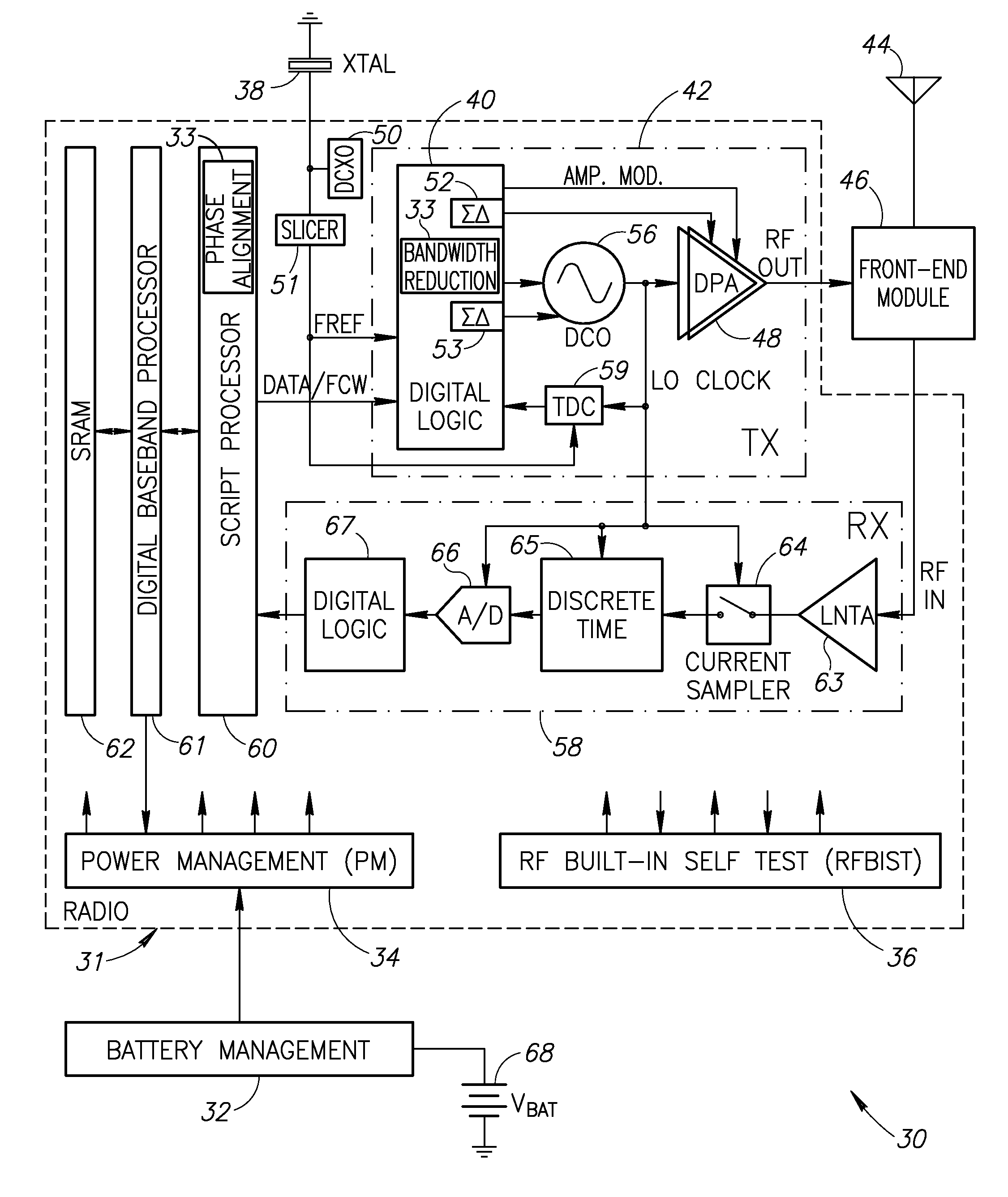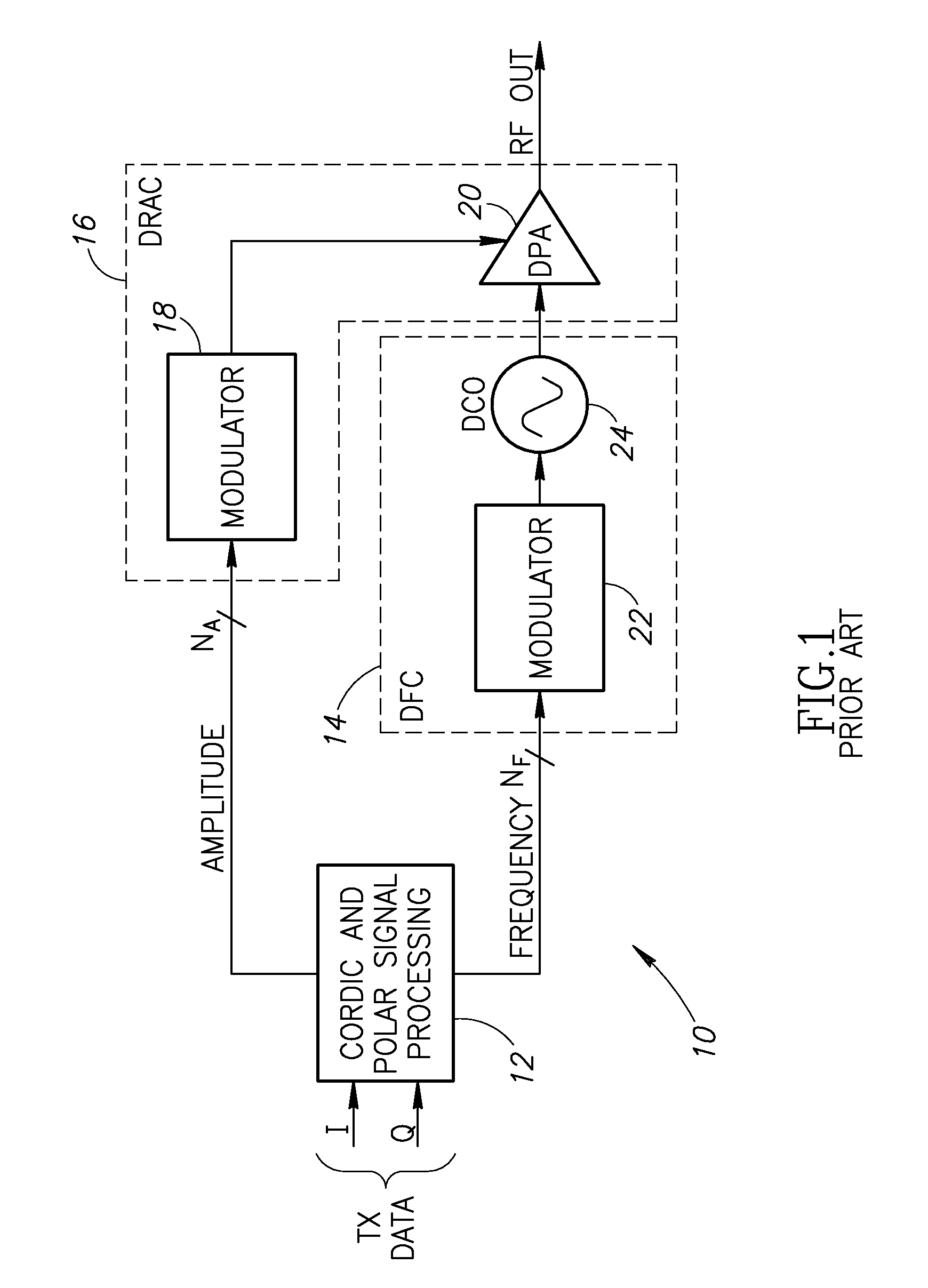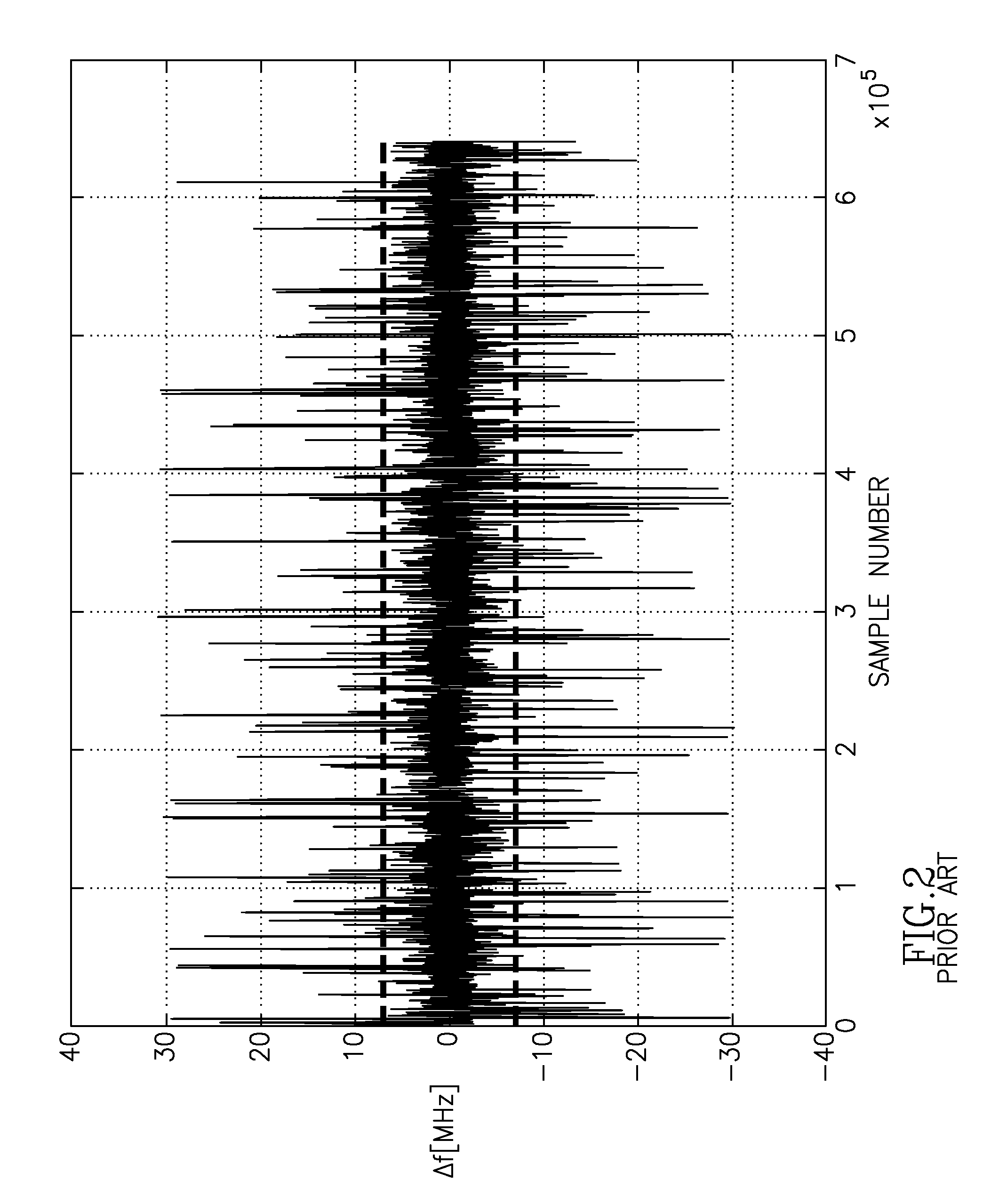Bandwidth reduction mechanism for polar modulation
a polar modulation and bandwidth reduction technology, applied in the field of data communication, can solve the problems of inability to meet the fabrication cost of rf/analog circuit mask adders, the implementation of traditional rf circuits is complicated, and the bandwidth is too large for a single oscillator (i.e. the dco) to handle, so as to reduce the modulation bandwidth, and reduce the polar modulation bandwidth
- Summary
- Abstract
- Description
- Claims
- Application Information
AI Technical Summary
Benefits of technology
Problems solved by technology
Method used
Image
Examples
Embodiment Construction
Notation Used Throughout
[0069]The following notation is used throughout this document.
TermDefinitionACAlternating CurrentACWAmplitude Control WordADCAnalog to Digital ConverterADPLLAll Digital Phase Locked LoopAMAmplitude ModulationASICApplication Specific Integrated CircuitAVIAudio Video InterfaceBISTBuilt-In Self TestBMPWindows BitmapBWBandwidthBWRBandwidth ReductionCICCascaded Integrator-CombCMOSComplementary Metal Oxide SemiconductorCORDICCOordinate Rotation DIgital ComputerCPUCentral Processing UnitDACDigital to Analog ConverterdBDecibelDBBDigital BasebandDCDirect CurrentDCODigitally Controlled OscillatorDCSDigital Cellular SystemDCXODigitally Controlled Crystal OscillatorDFCDigital-to-Frequency ConversionDPADigitally Controlled Power AmplifierDPPADigital Pre-Power AmplifierDRACDigital to RF Amplitude ConversionDRPDigital RF Processor or Digital Radio ProcessorDSLDigital Subscriber LineDSPDigital Signal ProcessorEDGEEnhanced Data Rates for GSM EvolutionEEPROMElectrically Erasab...
PUM
 Login to View More
Login to View More Abstract
Description
Claims
Application Information
 Login to View More
Login to View More - R&D
- Intellectual Property
- Life Sciences
- Materials
- Tech Scout
- Unparalleled Data Quality
- Higher Quality Content
- 60% Fewer Hallucinations
Browse by: Latest US Patents, China's latest patents, Technical Efficacy Thesaurus, Application Domain, Technology Topic, Popular Technical Reports.
© 2025 PatSnap. All rights reserved.Legal|Privacy policy|Modern Slavery Act Transparency Statement|Sitemap|About US| Contact US: help@patsnap.com



